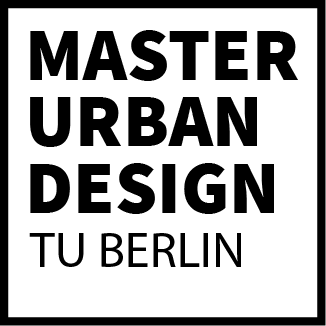 Urban Design Studio 2023/2024
Urban Design Studio 2023/2024
Tutors: Juliana Canedo, Christian Haid, Anke Hagemann
Chair: Habitat Unit
Students: Madita Goll, Martha Neubauer, Ina Schöllmann, Ara Song
How can the extraction pit in Althüttendorf help to prepare our world for the post-concrete-era?

Concrete, following water, stands as the second most utilized substance globally (Fraunhofer, 2021), serving diverse construction purposes such as buildings, bridges, tunnels, bases, and infrastructures. Primarily composed of sand and gravel, these resources not only contribute to concrete production but are also essential for other industries like glass and silicon manufacturing (Mineral Education Coalition, 2023). Alarming, however, is the diminishing availability of sand and gravel worldwide.

Moreover, concrete bears responsibility for approximately 8 % of carbon emissions worldwide (Skinner, Lalit, 2023), exacerbating environmental concerns. This issue intersects with the 2015 Paris Agreement‘s ambitious goal of limiting the global average temperature increase to 1.5 degrees Celsius by 2050. However, scientists warn that if current trends persist, we risk surpassing the 2-degree Celsius threshold by 2035 (Nogrady, 2024), threatening the agreement‘s objectives.
Finally, inadequate policies for site renaturation (own interview) post-extraction cause severe land degradation around active and former pits, intensifying CO2 emissions from the concrete industry. This underscores land degradation as the third key issue in the concrete industry. In response to these challenges, our scenario tackles the multifaceted issue of the “concrete- era, proposing a transition to a post-concrete- era. The scenario unfolds near Angermünde, where a significant sand and gravel extraction site(Althüttendorf), operational since the 1980s, faces the upcoming closure in 10 years (own interview).

The vision depicted in this scenario shows Berlin as a city living with minimal concrete by 2090. The illustration portrays a post-concrete era, reserving concrete only for critical infrastructure that cannot be replaced by circular or renewable materials. The emphasis is on minimizing construction. A new, small-scale, and flexible architectural typology as well as the transformation of outdated building types can provide new housing spaces. Circular and renewable materials like loam and timber are utilized, not only in constructing new buildings but also in repairing old concrete structures to prevent their demolition. Buildings beyond repair can be repurposed as creative open spaces for both humans and nature.



